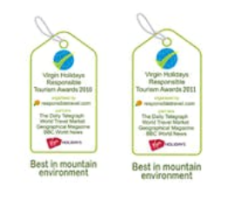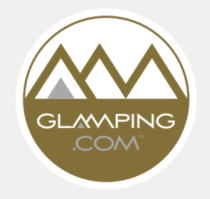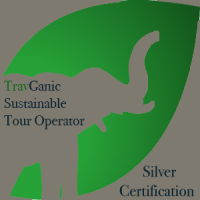Trekking in Nepal during April
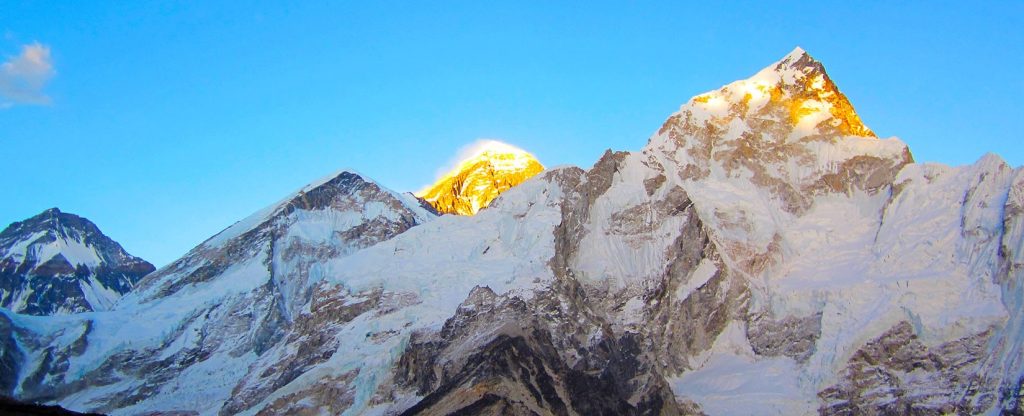
Trekking in Nepal in April April is the middle of spring, and you can expect much warmer weather. Despite some snowfall in the higher elevations and rainfall in the mid to lower altitudes than during the winter, it is warmer, and the warmth helps to melt the snow quicker. This can make the trails wet, muddy, and slippery. Take every precaution to trek safely. When you come across wet stones/rocks, green or black rocks/trail, muddy trail, or roots of trees in the forest – assume it is slippery and tread carefully. You should make most of the popular trekking trails if you are an experienced hiker except for the less trodden treks such as Upper Dolpo Circuit or Traverse because deep snow will make it challenging to get through the passes above 5000 meters. As always – it pays to invest in proper equipment such as a suitable down jacket, sleeping bag, a couple of layers of fleece, right thermal underwear, thick hiking socks, gloves, trekking pants, and warm hats, to name a few necessary gears to invest. It is always better to have more than less. It is good to dress up in layers that you can ‘peel’ one at a time when you start to warm/heat up as you begin trekking. Benefits of Trekking in Nepal Himalaya during April. This is the spring season, and flowers bloom in the middle hills of Nepal. Rhododendron forests can be very colourful with white, pink, and crimson red (Nepal’s national flower) flowers in bloom, Magnolias and wild orchids, to name a few. However, the clouds can begin to form in the latter part of the day, and it can start raining at the lower altitude and snow in the higher elevations during the late afternoon or evening. This is a good thing as it can clear the clouds and clear the clouds for excellent mountain views the following day. The spring rain, hail, or snow can drop the Rhododendron petals and make the forest floors bright and colourful. All the lodges and restaurants will be open during the spring season. You will be warm while hiking in the sunny weather – perhaps even sweat on the uphill climbs. You will get to meet many other trekkers in the lodges. All food on the menu will be available. The lodges will be fully stocked. Can I do a high-altitude trek in Nepal in April? You can undoubtedly do a high-altitude trek in Nepal during April. This is a better time to do a high-altitude trek than February or March. We do receive some precipitation for a few days every month. We receive more massive snowfalls during February and March rather than in the middle of April. Dangers/Inconveniences of trekking in Nepal during April. The lodges can be full of other trekkers and their support crew, such as guides and porters. The Internet can be very slow due to many people who have logged on. There might be a lot of people queuing for hot showers. The food could take longer due to the number of people staying at the lodge. The toilet floors could be wet and dirty due to the muddy trails. The paths could be icy or muddy due to the spring rain/snowfall. The trail could be slippery, and dirt can camouflage the ice. There could be very windy conditions from mid-March to the end of April as it is the windy season. You will likely face rain in the lower elevations and snow in the higher mountains during April. The views might not be as good in spring as it is during late autumn and April. In addition, forest fires could worsen the views during spring. The first rainfall of April 2021 arrived on the 8th and 9th of the month. It came at a crucial time when the Air Quality in Kathmandu and parts of Nepal was dangerously bad due to forest fires. The third week last and the five days of the month received a good amount of rainfall which also helped eliminate the pollution by forest fires. April 2022 experienced a lot more precipitation than usual. However, it was not windy as is the norm during April. Trekking during April 2020 and 2021 was disrupted due to the COVID-19 pandemic. April 1st, 2020, brought a lot of heavy rain, hail, and snowfall. The nation witnessed strong wind and thunderstorms from the middle to the end of the month. Precipitation was 15 per cent higher than usual in April 2020. The COVID-19 lockdown considerably cleaned the skies as there was little to no land and air traffic. April 2019 experienced, heavy rain, hail, and snowfalls throughout the month due to disturbances from the Arabian Sea and the Bay of Bengal. As a result, domestic flights were delayed, while some afternoon flights were cancelled due to bad visibility. April 2018 experienced more rainfall than the average caused by the Western disturbances and the Bay of Bengal. Check out our Trekking packages for Nepal, Bhutan, India, and Tibet.
Trekking in Nepal during March
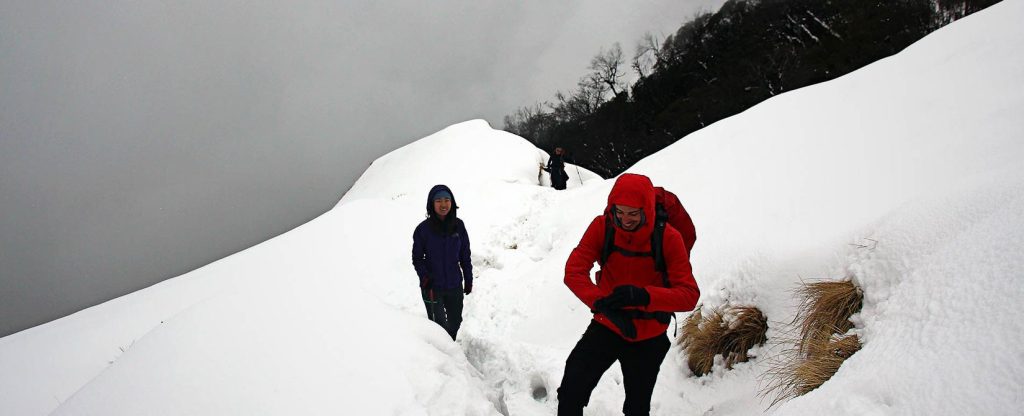
Trekking in Nepal in March March is the beginning of spring and warmer weather. Westerly disturbances from the Arabian Sea or The Hindu Kush bring snowfall to Nepal’s higher elevations in March. Despite more snowfall in the higher mountains than during the winter, it is warmer, and the warmth helps melt the snow. However, the precipitation can make the trails wet, muddy, and slippery. Take precautions to trek safely. When you come across wet stones/rocks, green or black rocks/trail, muddy trail, or roots of trees in the forest – assume it is slippery and tread carefully. You should make most of the favourite trekking trails if you are an experienced hiker, except for the less trodden treks such as Manaslu Circuit, Upper Dolpo Circuit, or Dolpo Traverse, because deep snow will make it challenging to get through the passes that are above 5000 meters. As always – it pays to invest in the right equipment such as a suitable down jacket, sleeping bag, a couple of layers of fleece, the right thermal underwear, thick hiking socks, gloves, trekking pants, and warm hats, to name a few essential gears. It is always better to have more than less. It is good to dress up in layers that you can ‘peel’ one at a time when you start to warm/heat up as you begin trekking. Benefits of Trekking in Nepal Himalaya during March. It is the spring season, and flowers bloom in the middle hills of Nepal. Rhododendron forests can be very colourful with white, pink, and crimson red (Nepal’s national flower) flowers in bloom, Magnolias and wild orchids, to name a few. However, the clouds can begin to form in the latter part of the day, and it can start raining at the lower altitude and snow in the higher elevations during the late afternoon or evening. The rain and snow are good as they can clear the clouds and clear the clouds for excellent mountain views the following day. 1) The spring rain, hail, or snow can drop the Rhododendron petals and make the forest floors bright and colourful. 2) All the lodges and restaurants will be open during the spring season. 3) You will be warm while hiking in the sunny weather – perhaps even sweat on the uphill climbs. 4) You will get to meet many other trekkers in the lodges. 5) All food on the menu will be available. 6) The lodges will be fully stocked. Can I do a high-altitude trek in Nepal during March? You can undoubtedly do a high-altitude trek in Nepal during March. This is because we receive some monthly precipitation for a few days. However, we receive more massive snowfalls during February and March rather than in the middle of winter. Dangers/Inconveniences of trekking in Nepal during winter. 1) The lodges can be crowded with other trekkers and their support crew, such as guides and porters. 2) The Internet can be prolonged due to many people who have logged on. 3) There could be a lot of people queuing for hot showers. 4) The food might take longer to be prepared due to the number of people staying at the lodge. 5) The toilet floors could be wet and dirty due to the muddy trails. 6) The paths could be icy or muddy due to the spring rain/snowfall. However, the trail could be, and dirt can camouflage the ice. 7) There could be very windy conditions as mid-March is the beginning of the windy season. 8) You will likely face rain in the lower elevations and snow in the higher mountains during March. 9) The views might not be as good in spring as during late autumn and winter. Forest fires could worsen the views during spring. 10) Sudden windy conditions bring rain or hail storms during March, which is the windy season. In addition, you have to be careful of flying debris, such as signboards, tin roofs, falling branches, and even trees that get uprooted. Trekking during the second half of March 2020 was disrupted due to the COVID-19 pandemic. March 2022 experienced the average amount of rain and snowfall depending on the altitude of the locations in Nepal. Mid-March is the beginning of the windy season here, but it wasn’t windy this year. March 2021, experienced a dry mouth. However, there was some rainfall in the first week, and the last day of March saw the most rain of the year. March 2020 experienced average rainfall with the usual gusts of wind, thunder, and lightning in different parts of the country. The visibility and environment were much cleaner and clearer due to the COVID-19 pandemic lockdown. March 2019 experienced good rain and snowfall. We witnessed more precipitation than in the past two decades, especially during March’s beginning and the end. Check out our Trekking packages for Nepal, Bhutan, India, and Tibet.
Trekking in Nepal during February
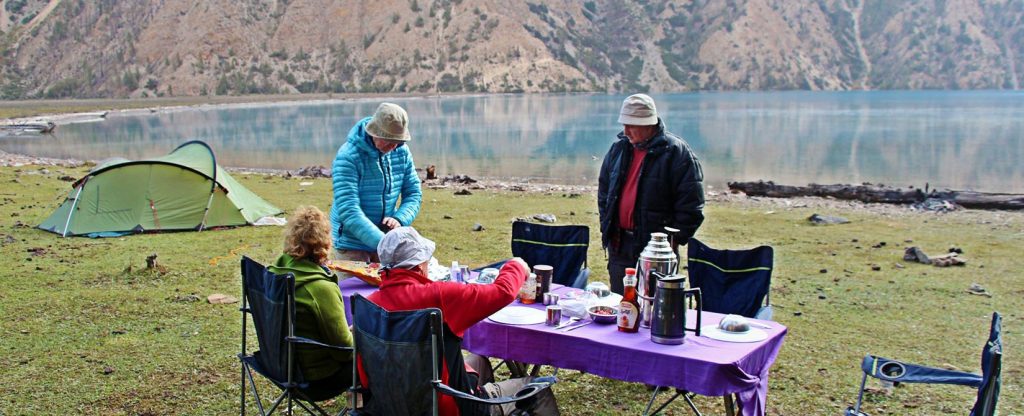
Trekking in Nepal in February February is one of the coldest months in Nepal, even though it is the end of winter. The Arabian Sea or The Hindu Kush’s Westerly disturbance region can bring rain in the low to middle hills and snowfall in the higher altitude areas. Interestingly it snows more in February than in December and January. Most people do not come to trek in Nepal this month, thinking it will be super cold and most of the country will be blanketed in snow. It is better to do treks in the lower elevations such as the Ghorepani trek, Everest Treks to Namche, Tengboche, Pangboche, or Short treks near Pokhara and Kathmandu. If possible, avoid the Annapurna Base camp trek as part of the trail becomes avalanche prone. However, you can prevent the dangers if you start early in the morning while fresh snow is still frozen rather than when the sun begins to melt the snow/ice and gravity causes an avalanche. Also, avoid doing Annapurna Circuit, Tilicho Lake, and Manaslu Circuit treks, as the passes can be covered by snow, and the trail can be icy. Having said this, Europe and North America would be much colder than Nepal during February. It always pays to invest in the right equipment such as a suitable down jacket, sleeping bag, a couple of layers of fleece, the right thermal underwear, thick hiking socks, gloves, trekking pants, warm hats, and perhaps even walking crampons, to name a few essential gears to invest in. It is always better to have more than less. It is good to dress up in layers that you can ‘peel’ one at a time when you start to warm/heat up as you begin trekking. Benefits of Trekking in Nepal Himalaya during February. Most people think winters in Nepal are freezing, and some might even imagine most of the country is covered in snow. This couldn’t be further from the truth. The clouds begin to form in the latter part of the day, and it can start raining at the lower altitude and snowing in the higher elevations during the late afternoon or evening. This is a good thing as it can clear the clouds and clear the clouds for excellent mountain views the following day. The past two winters have been clear like they used to be some 20-25 years ago. There will still be fewer trekkers on the trail and in the lodges if you go trekking during February to the popular trekking areas where there are lodges. You will be warm while hiking in the sunny weather – perhaps even sweat on the uphill climbs. You could be the only trekker in the lodge. For the same reason, the wifi works better in the hostels as fewer people log in. You can use the internet better for weather forecasts and temperatures. There will be fewer people queuing for hot showers. Despite winter, don’t be surprised by the greenery or flowers in the lower altitudes. The closed lodge owners start returning from warmer places such as Kathmandu, Pokhara, or Chitwan for the winter season. Can I do a high-altitude trek in Nepal during winter? You can undoubtedly do a high-altitude trek in Nepal during winter. The better time to do a high-altitude trek during winter is in December and January. We do receive some precipitation for a few days every month. We receive more massive snowfalls during February and March rather than in the middle of winter. Dangers/Inconveniences of trekking in Nepal during winter. Most of the lodges have started opening again. Not all food on the menu will be available. The toilet floors might freeze from water/urine spillage in the higher altitude treks. If possible, try to find toilets inside the main building; better still, ask if they have a room with an attached bathroom. Again, minimize spillage in the bathroom to avoid icing. Toilets could be frozen/blocked due to the cold at higher altitudes. The paths through villages could be icy because the villagers have to let the public tap run all the time to prevent the pipe from breaking from freezing. The trail could be icy, and dirt can camouflage the ice. There could be very windy conditions in the higher elevations, be prepared. You will likely face rain in the lower elevations and snow in the higher mountains during February. You might encounter rain/hail/snow storms due to the Western disturbances from the Arabian Sea or the Hindu Kush range. You must be careful of flying debris such as signboards, zinc roofs, falling branches, or even uprooting trees. Update: February 2022 experienced a decent amount of rain and snow, depending on the altitude. February 2019 has received good rain and snowfall up to the third week; the precipitation has been more than usual. Nepal experienced heavy snow and rainfall during the last four days of February 2019. Kathmandu valley and the surrounding hills experienced snowfall twice a month. On the 26th of February alone, it received 90mm of rain – 5 times the average monthly rainfall. Check out our Trekking packages for Nepal, Bhutan, India, and Tibet.
Trekking in Nepal during January
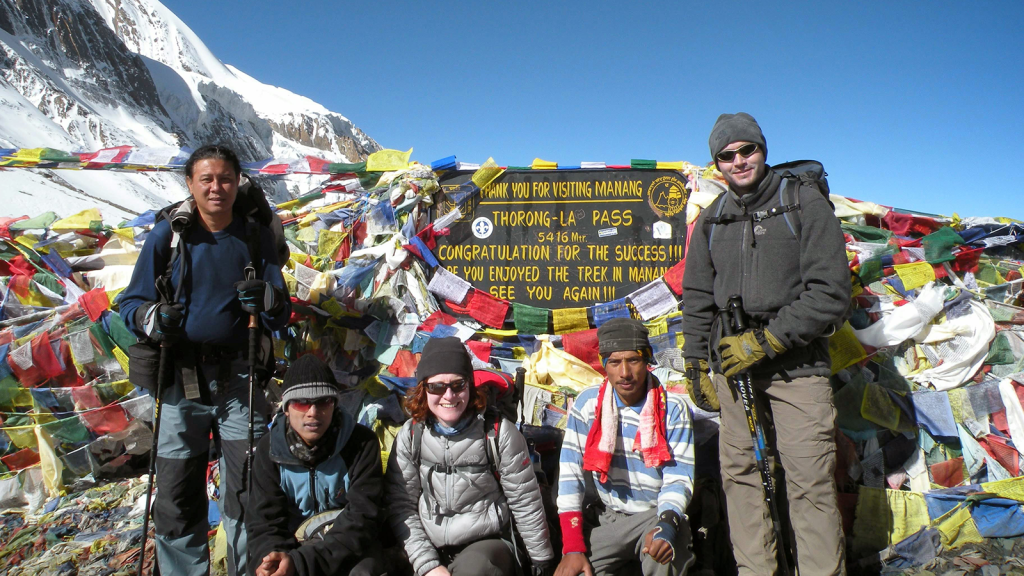
Trekking in Nepal in January January is the middle of winter and the coldest month in Nepal. Most people do not go trekking in Nepal for several reasons, such as fearing the extreme cold and heavy snowfall, which raises safety concerns. Little do they know that January is one of the best months to go trekking not only on Nepal’s lower altitude trek such as the Ghorepani route, Mardi Himal, and Everest Panorama but also on some of the well-trodden paths such as Gokyo Lakes and Everest Base Camp or Everest Base Camp or Annapurna circuit with Tilicho lake. The last decade has seen a decrease in snowfall in January. However, there is precipitation for a few days every month, where it rains in the lower elevations while it snows in the higher mountains. It is good to dress up in layers, which you can ‘peel’ one at a time when you start to warm/heat up as you begin trekking. A friend and I personally did a winter trek of Annapurna Circuit with Tilicho Lake this January with relative ease. Most lodges have Internet connections with WIFI facilities; it is easy to check the weather forecast in advance. The online weather apps claimed temperatures to be -18 in places like Manang, 3500 meters, or even -24 on the Thorong La pass at 5416 meters. We were warm with our sleeping bags and an extra blanket. We were comfortable walking during the day and even perspired on uphill climbs. It is always better to be over-prepared rather than underprepared. What to expect while trekking in January? You can expect the temperatures to be colder, which ensures the clouds stay low, making the view of the mountains visible for most of the day, if not all day, for several days. The trekking trails and the lodges will be less crowded, which makes it pleasant. There will be no queue for hot showers; your meals will be served faster. You might even have the lodge to yourself. Try to have additional days if you intend to do high-altitude treks; the mountains’ weather can change with little warning. Sometimes snowfall can cut off high passes for a few days. Beware of icy conditions on the trail when trekking in winter. Be extra careful when you pass villages higher than 2500 meters. The villagers leave the communal taps running to prevent them from freezing and pipes breaking. This can make the area near the faucet very icy and sleek. Will the lodges and restaurants on the trekking trails be open? Most lodges and restaurants in the lower elevations will remain open. However, some hostels are closed in the higher altitude villages as the owners go to warmer places like Kathmandu, Pokhara, or Chitwan. Some of the lodges are left to the employees to run during the winter off-season. You don’t have to worry; some clubs are open in the higher villages; otherwise, the person running the hostel will inform you if the lodges on your way are all closed. What equipment to bring for Nepal trekking in January? You are advised to dress up in layers during winter trekking in Nepal. It can be sunny during the daytime making it easier to take coats off as you begin to warm up. Good trekking boots are advised in preparation for possible snow and ice, along with thick socks. Thermal underwear, and Merino wool products, are a good investment if you plan to hike in high-altitude areas. They are supposed to stay odourless for up to two weeks; these will help if you feel the cold and can’t take showers for extended periods. An excellent windproof jacket and a thick winter trekking or down jacket will be helpful. Bring a suitable sleeping bag; if you feel cold, blankets are more readily available than during the peak season for additional warmth – do be warned, and some quilts can be smelly. You are expected to eat at the lodge you plan to spend the night. However, they have a higher charge if you eat outside as their profit comes from your meals rather than the room charge. Do I still need Trekking permits? Yes, you will need trekking permits throughout the year. It is available in Kathmandu and Pokhara. You are also advised to have proper travel insurance covering helicopter evacuation in case of illness, accident, natural calamity, or political uprising. Update: January 2021 – It rained in altitudes lower than 3000 meters, and higher altitude areas experienced snowfall during the first week of the new year. It was caused by the Western disturbances bringing a cold front for a couple of days in Nepal. January 2020: Nepal, Sikkim, Darjeeling, and Bhutan experience early snowfall on the 3rd to 5 of the month. We experienced more precipitation on the 8th, 9th, 16th, and 17th of January. This year we experienced snowfall that was three times more than usual. January 2019: It snowed in Eastern Himalayas on the 1st and 3rd of January. January 2019 experienced a good amount of rainfall and snowfall like it used to two decades ago. Check out our Trekking packages for Nepal, Bhutan, India, and Tibet.
Trekking in Nepal in the summer season
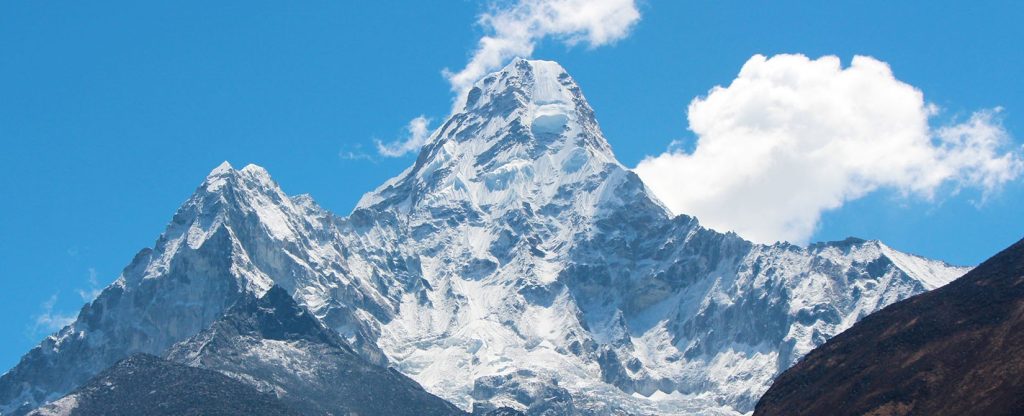
Trekking in Nepal during the summer season Nepal has a short pre-monsoon summer during May and June. The monsoon begins in the second or third week of June. You can expect the temperature to be hot in the lower elevations and warm at higher altitudes during the daytime. In addition, there might be some snowfall in the higher mountains than during the summer, as it is much warmer, and the snow melts quicker, making the trails wet, muddy, and slippery. Therefore, be cautious and trek safely. When you come across wet stones/rocks, green or black rocks/trail, muddy trail, or roots of trees in the forest – assume it is slippery and trek carefully. You will make most of your favourite trekking trails if you are an experienced hiker except for the less trodden treks such as Upper Dolpo Circuit or Upper Dolpo Traverse because deep snow will make it challenging to get through the passes that are above 5000 meters. As usual – it pays to invest in proper equipment such as a suitable sleeping bag, a couple of layers of fleece, the right thermal underwear, thick hiking socks, gloves, trekking pants, and warm hats, to name a few essential gears to invest in. It is always better to have more than less. It is good to dress up in layers that you can ‘peel’ one at a time when you start to warm/heat up as you begin trekking. Benefits of Trekking in Nepal Himalayas during the summer. May/June is summer, and flowers bloom in Nepal’s middle and high hills. Rhododendron forests can be very colourful with white, pink, and crimson red (Nepal’s national flower) flowers in bloom, Magnolias and wild orchids, to name a few. However, the clouds begin to form in the latter part of the day, and it can start raining at the lower altitude and snow in the higher elevations during the late afternoon or evening. This is a good thing as it can clear the clouds and clear the clouds for excellent mountain views the following day. The rain, hail, or snow can drop the Rhododendron petals in the higher altitude areas and make the forest floors bright and colourful. Most of the lodges and restaurants will be open during the summer season. Your food should be served faster due to the low number of trekkers. The queue for the shower should be short, if at all. You will be warm to hot while hiking in the sunny weather – perhaps you will sweat on the uphill climbs. You will get to meet some other trekkers in the lodges. The Internet speed should be decent due to fewer people logging in. Can I do a high-altitude trek in Nepal during May and June? You can undoubtedly do a high-altitude trek in Nepal during May. It is better to do a high-altitude hike than during February or March. We do receive some precipitation for a few days every month. We receive more massive snowfalls during February and March rather than in the middle of May and June. Dangers/Inconveniences of trekking in Nepal during the May and June Summer months. All food on the menu might not be available. The toilet floors could be wet and dirty due to damp and muddy trails. The paths could be muddy due to the summer rain/snowfall. But on the other hand, the trail could be slippery, and dirt can camouflage slippery tree roots. There could be very windy conditions in the higher elevations. You will likely face rain in the lower elevations and snow in the higher mountains during summer, especially if the monsoon arrives in early June. The views might not be as good in spring as it is during late autumn and May. In addition, forest fires could worsen the views during late spring. Trekking regions that fall into the Rainshadow areas: Upper Mustang Trek You will be visiting one of the scenic trekking trails in the monsoon season in Nepal. Once an independent Kingdom that was later annexed into Nepal’s territory, Upper Mustang is one of the restricted trekking destinations in Nepal that requires a special permit and to be booked with a tour operator. Back Packers are not allowed to trek here. The Buddhists who once followed the Bon religion inhabit the upper Mustang predominantly. Upper Mustang is a high-altitude desert. During the monsoon season, you will witness the rivers’ increased water levels, including the holy and mighty Kali Gandaki River. Upper Dolpo Trek Juphal to Juphal or Upper Dolpo Traverse Juphal to Jomsom Trek This trekking destination takes you to one of the most remote regions in Nepal. The followers of the Bon religion, followed by Buddhists and Hindus, mainly inhabit it. The locals’ terrain, culture, and traditions are very close to the Tibetan way of life. The trekking trail partly lies in the Shey Phoksundo National Park, Nepal’s most extensive National Park. It is the only National Park in the trans-Himalaya region. The beauty of this region is unparalleled to other trekking destinations. Upper Dolpo doesn’t receive continuous rainfall in the rain shadow region. Trek here for the unique culture, landscape, scenery, and biodiversity. Jomsom to Muktinath Trek – email us for the itinerary. This trekking destination is more popular as a pilgrimage that is suitable during the monsoon season in Nepal. Muktinath attracts both Hindus and Buddhists alike for pilgrimage. Thus, you may embark on a spiritual or adventurous trek to this area, which remains dry most of the year, except in the winter when the region is covered by snow. Besides the holy Muktinath Temple, Kagbeni is the other popularly travelled destination in this region. Trekking during the summer of 2020 was disrupted due to the COVID-19 pandemic. Check out our Trekking packages for Nepal, Bhutan, India, and Tibet.
Trekking in Nepal in the autumn season
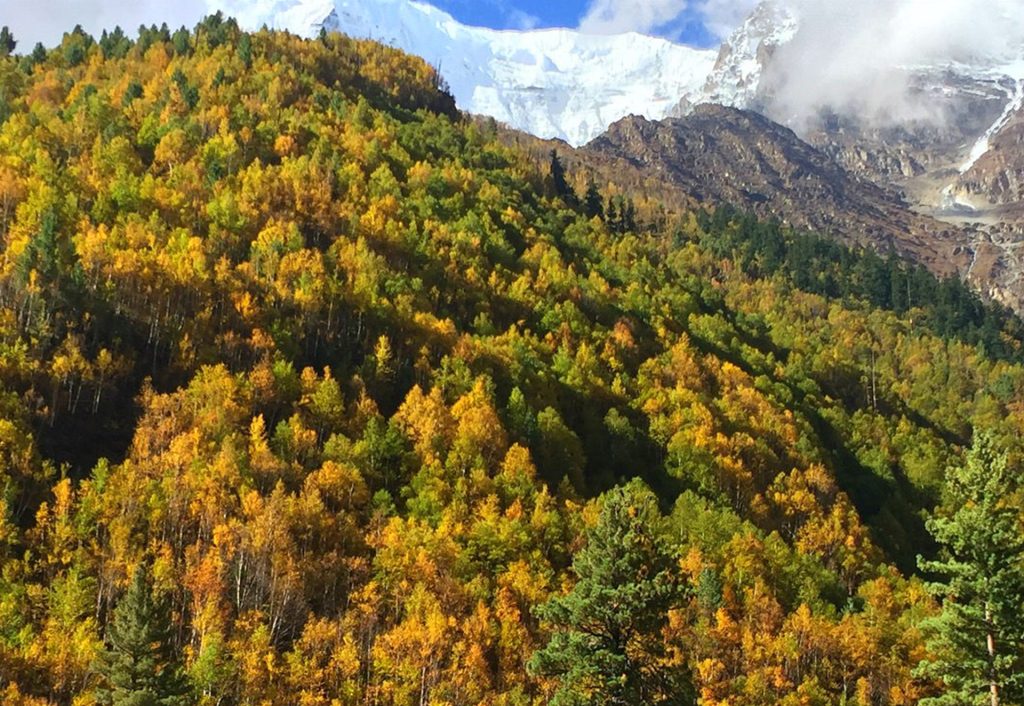
Trekking in Nepal during the autumn/fall season Fall Peak Season: October and November The autumn months of September, October, and November are the favourite months of Nepal’s fall trekking season: temperatures are mild, the weather is relatively stable, and the clear air makes for superb mountain views. The high mountains are still cold, and lower elevations are still warm, but the daytime walking temperatures are the most pleasant overall. Severe weather can hit the hills anytime, but fall has the most stable conditions. The autumn/fall season is also when Nepal receives most trekkers. The most popular trails, such as Langtang, Everest Base Camp, and the Annapurna Circuit, will be bustling with trekkers, and this is experienced from the paths to the teahouses. The tourist district of Thamel in Kathmandu will be full of tourists. Getting rooms in guest houses or hotels can be problematic if you haven’t booked in advance. Trekkers start coming from September onwards. However, September is the tail end of the monsoon season. Therefore, you can still experience the same annoyances as during the monsoon season, such as landslides, blocked trails, and leeches, to name a few. Click here for more details on what it is like to go trekking in Nepal during September. Most tour operators and trekking agencies claim October is the best month for Trekking in Nepal. It was very accurate 20 or more years ago. It still is the busiest month with hotel rooms; guesthouses in the cities are overbooked. The past decade or more has shown that climatic change has brought rain during the supposed “Clearest” month of October. The weather can be affected by cyclones in the Bay of Bengal. Sometimes the storms bring adverse weather to the high Himalayas in the form of unseasonal rain. Simultaneously, it caused devastation, like in October 2014, when unseasonal snowstorms killed several trekkers and their local staff. The lodges on the trail can be complete, and there have been cases where some backpackers had to go further on to the next place, hoping to find rooms in the subsequent settlement. Trekkers have slept on the dining tables and floors of the dining halls of the lodges during October. November continues to witness the influx of autumn-season trekkers. There are several days of precipitation each month, but November is a more stable time for trekking in Nepal. The number of trekkers starts to decline from the third week of November, thinking the Himalayan regions must be snow-covered; this is far from the truth. The slightly colder temperatures make the clouds stay low longer, and the mountain views are much clearer for more extended periods. Benefits of Trekking in Nepal Himalaya during the autumn/fall season. This is the fall season; some flowers are still blooming in Nepal’s middle and high hills. However, the clouds can begin to form during the late afternoon, and it can start raining at the lower altitude and snow in the higher elevations during the late afternoons. This could be a good thing to clear the clouds and clear the clouds for excellent mountain views the following day. The trekkers will be seen in significant numbers on the trail and lodges during the autumn/fall. You will be warm to hot while hiking during the daytime. You will meet plenty of other trekkers on the trail and lodges. You can use the Internet (if it is not too slow) for weather forecasts and temperatures. A lot of people could be queuing for hot showers. You can see villages ripening crops such as rice and millet. Can I do a high-altitude trek in Nepal during the autumn season? You can undoubtedly do a high-altitude trek in Nepal during the fall season. This is a better time to do a high-altitude tour than in February or March. However, you can expect some snowfall in the higher elevations, but this should melt quickly due to the warmth and humidity. We do receive some precipitation for a few days every month. We receive more massive snowfalls during February and March rather than in the middle of October. Dangers/Inconveniences of trekking in Nepal during the Autumn/Fall season. Trekking trails can still be muddy and slippery. Be careful of wet roots while trekking through forests. Again, leeches might come out when it is raining or in moist areas from Late September to mid-October or whenever it rains. For prevention, you can make a small pouch of rock salt and chewing tobacco. You can dab the bag on the leeches when they get on your boots, clothes, or you. You need to dip the bag in water to moisten it is more useful this way. Some people burn leeches or use Dettol or regular salt. However, the rain can wash them off, making rock salts and chewing tobacco mixture an excellent choice. Landslides can be dangerous; walk briskly with utmost caution when you cross landslide areas on the trail. DO NOT stop to take photos in the middle of the landslip area. Instead, two or more of you cross the landslide area while the other person looks out for falling rocks. Start early in the morning to enjoy the unobstructed views of the mountains and surroundings. The WIFI speed could be frustratingly slow due to the number of users. Lodges can be full of trekkers, even sleeping on the dining tables, benches, and floors. There have been times when trekkers had to walk for two to three hours more than intended/planned, as all the lodges were full. The leeches start coming out in elevations below 2400 meters when it rains. It can be hot and humid in lower elevation areas. Insects in the more moderate altitude areas can bite you – bring suitable insecticide. The autumn season is September, October, and November; however, rains could disrupt domestic flights to or from Short take-off and landing strips (STOL) airports like Lukla, Jomsom, and Juphal. Landslides can block roads causing delays in your holiday program. Check out our Trekking packages
Trekking in Nepal in the spring season
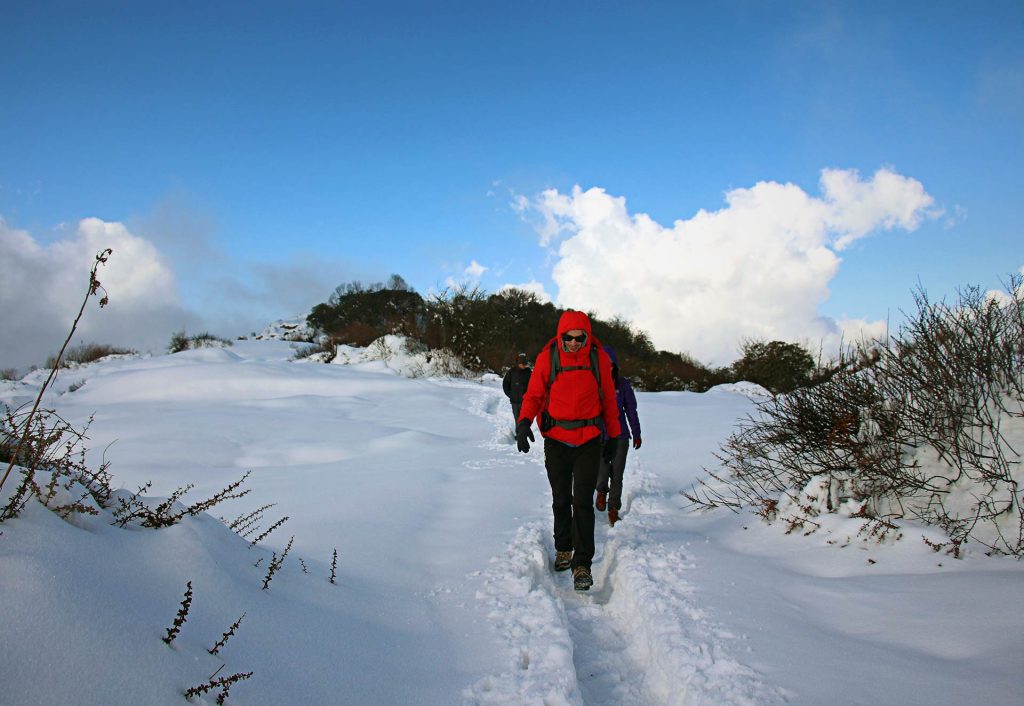
Trekking in Nepal during the spring. The spring months of March and April are the second most popular season for trekking in Nepal. The flowers will bloom in the middle altitude hills in March, while the higher reaches of the hills’ flowers should bloom in April. It is also the windy season from mid-March until the end of April, bringing sudden gusts of wind, rain, and hail storms in the lower to mid-level elevations or even snowstorms at the higher altitude areas. It is also called pre-monsoon weather. The precipitation can make the trails wet, muddy, and slippery. Be cautious when hiking through wet stones/rocks, green or black stones/paths, muddy trails, or tree roots in the woods – assume it is slippery and takes careful steps. You should be able to do most treks in Nepal during spring except for remote and high-altitude treks such as the Upper Dolpo Traverse or Dolpo Circuit, as the high passes would still be covered in snow. As always – it pays to invest in the right gear, such as a suitable down jacket, sleeping bag, a few layers of fleece, the right thermal underwear, thick hiking socks, gloves, trekking pants, and warm hats, to name a few essential gears. It is always better to have more than less. If you are going on a longer trek, invest in Merino wool products such as their base layers, socks, underwear, etc. Merino wool products are supposed to be odourless for up to two weeks of wear. It is always better to dress up in layers that you can ‘peel’ one at a time when you start to warm/heat up as you begin trekking. Benefits of Trekking in Nepal Himalaya during the Spring. It is the spring season, and flowers bloom in the middle hills of Nepal. Rhododendron forests can be very colourful with white, pink, and crimson red (Nepal’s national flower) flowers, Magnolias, and wild orchids, to name a few. The clouds begin to form in the latter part of the day, and it could start raining at the lower altitude and snow in the higher elevations during the late afternoon or evening. The rain/snow is good as it can clear the clouds for magnificent mountain views the following day. 1) The spring rain, hail, or snow can drop the Rhododendron petals and make the forest floors bright and colourful. It can also clear the clouds for unobstructed views the following morning. 2) All the lodges and restaurants will be open during the spring season. 3) You will be warm while hiking in the sunny weather – perhaps even sweat on the uphill climbs. 4) You will get to meet many other trekkers in the lodges. 5) All food on the menu will be available. 6) The lodges will be fully stocked. Can I do a high-altitude trek in Nepal during March? You can undoubtedly do a high-altitude trek in Nepal during March. This is because we receive some monthly precipitation for a few days. However, we receive more massive snowfalls during February and March rather than in the middle of winter. Dangers/Inconveniences of trekking in Nepal during the spring season. 1) The lodges can be crowded with other trekkers but won’t be as busy as in October or November. 2) The Internet can be very slow due to many people who have logged on. 3) There could be a line of people queuing for hot showers. 4) The food might take longer to be prepared due to the number of people staying at the lodge. 5) The toilet floors could be wet and dirty due to the muddy trails. 6) The paths could be icy or muddy due to the spring rain/snowfall. However, the trail could be, and dirt can camouflage the ice. 7) Mid-March, the beginning of the windy season, could be very windy conditions. 8) You will likely face rain in the lower elevations and snow in the higher mountains during March. 9) The views might not be as good in spring as during late autumn and winter. But, again, forest fires are usually the reason. 10) Sudden windy conditions bring rain or hail storms from mid-March to mid-April, as it is the windy season. In addition, you must be careful of flying debris such as signboards, corrugated iron roofs, falling branches, or even uprooted trees. Trekking during the spring of 2020 was interrupted due to the COVID-19 pandemic. However, the visibility and environment were much cleaner and clearer due to the lockdown brought by the pandemic. March 2019 experienced record precipitation with more than average rain and snowfall. April 2018 experienced more precipitation than usual. Check out our Trekking packages for Nepal, Bhutan, India, and Tibet.
Trekking in Nepal in December
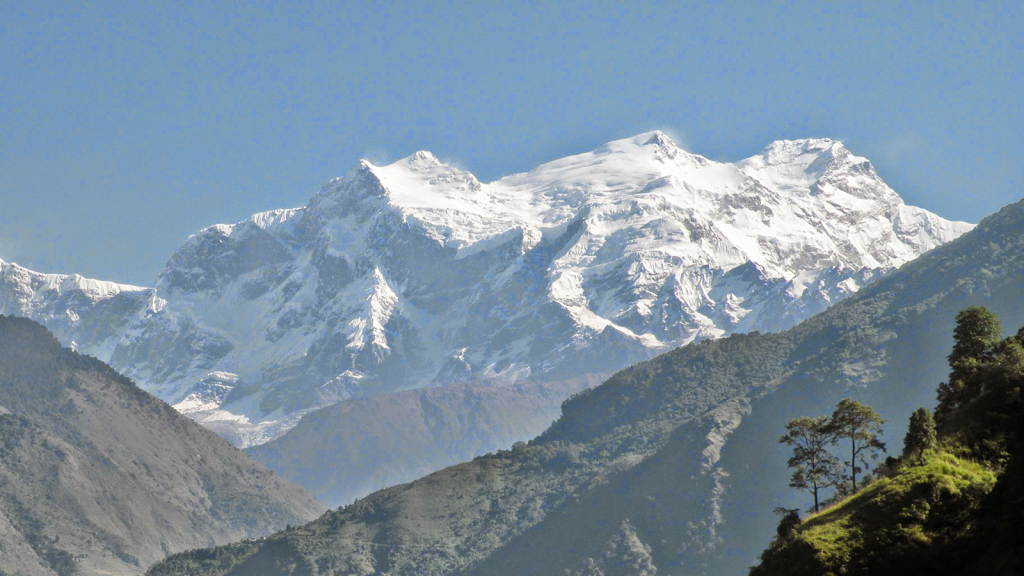
Trekking in Nepal during December Most people are discouraged from trekking in the Himalayas, the highest mountain chain in the world, during the winter. They think trekking in December is crazy, suspecting it to be super cold and snow blankets the whole nation blanketed by snow. They could not be more wrong. Nepal is of similar latitude as Cairo and Miami, closer to the Equator than the Arctic Circle. So if you go trekking in the middle hills with altitudes ranging between 1000 meters to 3500 meters, don’t be surprised if the temperatures are in the high teens or even low 20s degrees Celsius than the summer of most Northern European nations. However, it always pays to invest in the right quality gear, such as a down jacket, a couple of fleece jackets, pants, base layers, warm hats, gloves, and sleeping bags, to name a few essential types of equipment. It is better to have more than less. One of the best-kept secrets is that trekking in Nepal during the winter has many benefits. The days when it snows by the second half of November or early December are long gone. However, a few days in December, precipitation can result in rain in the low to middle altitudes and snowfall in higher elevations. It is good to dress up in layers, which you can ‘peel’ one at a time when you start to warm/heat up as you begin trekking. Benefits of Trekking in Nepal Himalaya during December. For the same reason mentioned above, most people think winters in Nepal are freezing, and some might even imagine most of the country is blanketed in snow. This couldn’t be further from the truth. The colder weather keeps the clouds down longer, and even if the clouds form and rise in the afternoons, they sink quicker due to the cold than in the warmer months. This makes the visibility of the mountains clear for most of the day. You will have the feeling of having the whole place to yourself. The views over the past two winters have been unobstructed like they used to be some 20-25 years ago. There will be many fewer trekkers on the trail and lodges if you go trekking to the famous trekking areas where there are lodges. You will be warm while hiking in the sunny weather – perhaps even sweating on uphill climbs. You could be the only trekkers in the lodge. For the same reason, the wifi works better in the hostels as fewer people log in. You can use the internet better for weather forecasts and temperatures. There will be fewer people queuing for hot showers. Despite winter, don’t be surprised by the greenery or flowers in the lower altitudes. The open lodges in the higher altitudes are left to the employees during winter, while the owners go for warmer places such as Kathmandu, Pokhara, or Chitwan. The employees keep the profit from food sales and only have to replace what they used. Therefore, this is a way for the employees to supplement their low salaries. Can I do a high-altitude trek in Nepal in December? A high-altitude trek in Nepal is possible during December. The better time to do a high-altitude tour during winter is in December and January. We do receive some precipitation for a few days every month. We have begun to receive more massive snowfalls during February and March than in the middle of winter. Dangers/Inconveniences of trekking in Nepal during winter. Not all the lodges in the higher altitude will be open; no need to worry, as you will find a place to spend the night quite comfortably. Not all food on the menu will be available, but there will be enough to fill you up. The toilet floors might be frozen from water/urine spillage in the higher altitude treks. If possible, try to find toilets inside the main building; better still, ask if they have a room with an attached bathroom. Again, minimize spillage in the bathroom to avoid an icy floor. Toilets could be frozen/blocked due to the cold at higher altitudes. Water supply via pipe will be disconnected in higher elevations as frozen water expands and breaks the pipes. The paths through villages will be icy because the villagers have to let the public tap run all the time to prevent the pipe from breaking from freezing. The trail could be icy, and dirt can camouflage the ice. There could be very windy conditions in the higher elevations, be prepared to bring proper windcheaters and warm layers. Despite having mentioned this, there is less snowfall in December and January; you might still encounter rainfall in the lower elevation or snow – after all, mountain weather can change without much warning. We have operated these treks in the winter months of December and January. 2014 Annapurna Circuit Trek We did a trek to Annapurna base camp in December/January 2014-2015 2016 Manaslu circuit in December. We operated a trek to Langtang – Gosainkunda in December/January 2016-2017 2017 Gokyo Lakes and Everest Base camp in December 2017. 2018, 2019 We did the Everest base camp trek with Singaporeans in December. We did Family Annapurna Trek during December at the lower altitude. When we did the Annapurna circuit trek with Tilicho Lake in January 2018, we met tourists and locals who misinformed some trekkers. Locals told them that the higher villages and the Thorung La 5416m pass were covered in deep snow. The people who said these will likely have done very little or no trekking experience. December 2021 – There was some rain in the lower elevations and snowfall above 2300 meters at the end of this month. Some areas received as much as 50 mm of rain and snow between the 29th and the 30th of December. December 2020 – The weather remained fair, and temperatures were much warmer than in the previous two years. In addition, we witnessed an average of 3-5 days of precipitation.
Tourism in Bhutan

Tourism in Bhutan The Government of Bhutan allowed tourism to begin in 1974 to promote its unique culture and traditions and raise revenue in the otherwise isolated Kingdom. Bhutan government’s slogan for tourism is “Low Volume, High Quality.” Two hundred eighty-seven tourists visited Bhutan in the first year. Tourist arrivals increased steadily to 2850 in 1992 and 7158 in 1999. These days the number of visitors to Bhutan is around 80,000. Tourism is a massive contributor to the Bhutanese Government’s coiffeur and one of the biggest employers. However, the government is profoundly aware of tourism’s effect on the environment, unspoiled landscapes, and tourists’ unique culture. Therefore, they have restricted the level of tourist activity from the start, preferring higher quality tourism. Bhutan Tourism Corporation Limited (BTCL), and quasi-autonomous and self-financing body, implemented the government’s tourism policy until 1991. The Bhutanese government privatized BTCL in October 1991. These days more than 800-registered travel companies are operating in Bhutan. All individuals or groups must travel on a pre-planned, prepaid, guided package tour in Bhutan. Most foreigners aren’t allowed to go independently in the Kingdom. The arrangements must be made through a government-registered travel company or an overseas tour operator. The most important tourism centres are in the capital Thimpu, Paro’s western city, where the only international airport is located in the Kingdom. Taktsang, also called the “Tiger’s Nest,” is a monastery on a Cliffside overlooking the Paro Valley. This is an incredibly sacred temple to Buddhists. A Buddhist deity is housed in a cave in the Temple. It is believed this Deity introduced Buddhism to Bhutan and fasted for 90 days while fighting the demons that inhabited this valley to spread Buddhism. This impressive Temple has stood for more than a millennia despite two fires (the repaired damages). Punakha Dzong (fort) is another important site to visit. It is the second-largest Dzong in Bhutan and is still a significant ceremonial venue for the Royal family. For example, the current king’s coronation and the wedding took place here. Druk Air, the National Carrier, and Bhutan Airlines (private airlines) operate flights in and out of Bhutan. The current minimum daily package includes the following: 1) A minimum of 3-star accommodations – you can upgrade to 4 and five stars for an additional charge. 2) A licensed Bhutanese tour guide for the period of your tour package. 3) All transportation by road (excludes domestic flights), if you are also trekking – camping equipment and portage of all gears and food during the trekking period. 4) It includes all permits, entrance fees, and meals – breakfast, lunch, and dinner. The minimum daily package cost for tourists travelling in a group of 3 or more during the low season months of January, February, June, July, August, and December is US$200 per person per night. The minimum daily package rate for tourists visiting in a group of 3 or more during the high season months of March, April, September, October, and November is US$250 per night per person. If you are a single traveller, the government charges an additional F.I.T. surcharge of US$40 per night. If there are two of you, you must pay an additional US$30 per night for your Bhutan tour. The Royal Government of Bhutan sets minimum selling prices for packages to Bhutan. These must be paid in U.S. dollars before arrival in Bhutan. Cancellation Please discuss with your service provider (tour operator) the cancellation policy. All Bhutan Tours are prepaid, so you’ll only need money for drinks, laundry, souvenirs, and tips; for this, it is best to bring cash. A.T.M.s are available in most main towns. However, it would be wise not to rely entirely on being able to use plastic. Credit cards are accepted in some hotels and souvenir shops, but only in major cities or “tourist” areas. The currency unit is the Ngultrum (Nu), pegged to the Indian rupee. The Ngultrum is further divided into 100 chetrums. Indian rupees are used freely throughout Bhutan (don’t be surprised if you get the change in rupees). Officially 500 and 1000 Indian rupee notes are not accepted due to large counterfeit bills. It is OK with the Bhutanese to bring a reasonable amount of Indian currency into Bhutan, though Indian regulations prohibit currency export.
How to handle arriving at Kathmandu airport
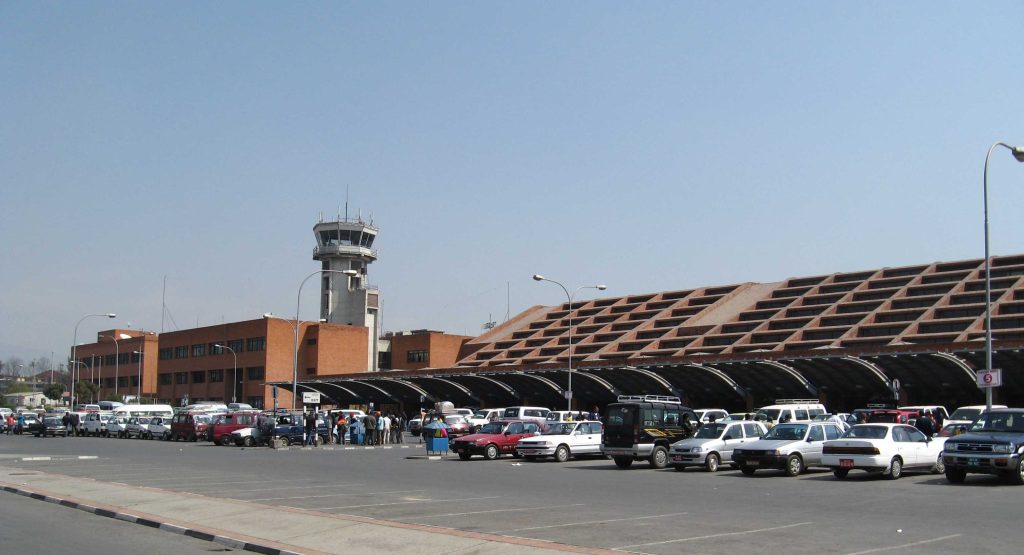
Arrival at Kathmandu airport What to expect at Kathmandu Airport It can be a daunting experience if you arrive at Kathmandu’s Tribhuvan International Airport for the first time after a long flight. The queues can be disorderly and unorganised. When you fly into Nepal, getting sorted out can be a rite of passage. You will soon notice that the International airport is busy and see its wear. One needs to be patient, assert your ground in lines, and ask when you are unsure where to go. Do not let the frustratingly disorderly entry process dishearten you; Nepal is a beautiful and exciting country waiting to be explored just a few steps away. Rest assured, you will have a great time soon. Standing in Lines. Look for the small signboards above the counters that are in the front; don’t jump into the first long queue. Instead, ask others in the line which part of the process they are waiting for. It can be frustrating to wait 30 minutes or more before you finally reach the desk and get told you are supposed to be on another counter. Don’t be surprised if the waits are long, disorderly, and impolite. You might have to shuffle your feet and perhaps even stick your elbows out to stop others from trying to cut the line to go in front of you. Arriving at the Immigration Hall. The flight crew of your airline should have given you a customs declaration and visa form. Filling them on board your flight will provide you with a significant advantage. If you didn’t get the forms, you would find English versions among the paper piles on the tables where others fill out their paperwork. In the unlikely case of not seeing the forms on the tables, go to the front of the queue and get one from the immigration counter. Advice: Always keep passport-sized photos, a pen, and your passport accessible to complete any paperwork. If you don’t have a passport-size picture, you will need to fight for one of the electronic booths on the left. It saves time if you have a photograph with you. Bring several passport-sized photos, as they can be helpful in Nepal, especially if you plan to get a local SIM card or trekking for other purposes. Hold your boarding pass with the luggage tag; you need it to claim your bags. These days, you can fill out the Nepal visa on arrival form online and print it before arriving in Nepal. However, there have been complaints of problems with the form, including that it isn’t on a secure HTTPS website. So you will probably still need to pick up the arrival card and complete it in the arrival hall. Visa on arrival for Nepal You will need to get a visa on arrival unless you have organised a tourist visa at a Nepalese embassy in your residence before arriving in Nepal. Nepal’s online visa form is an option, but filling out a paper form is better until better electronic security is enforced. You must know your hotel’s exact address in Kathmandu, whether you fill out a visa-on-arrival form online, in a booth, or on paper. Keep the hotel address handy from the guidebook and email confirmation from the booking website. Payment for Visa on arrival After completing the forms, you will have to approach one of the counters to pay the visa fee, and the preferred currency is U.S. dollars in cash. They accept some major currencies; however, you will get an unfavourable exchange rate. So have the exact amount handy, and make sure the notes are crisp, not too wrinkled or torn. If your currency is not accepted, there is a small currency exchange window to the right of the counter. Unfortunately, exchange rates at airports are not favourable most of the time. Whether you have opted for an online visa or a visa on arrival, the time it takes you to get through the queue is a draw of luck. Visa on arrival fees: 15 days: U.S. $30 30 days: U.S. $50 90 days: U.S. $125 Citizens of SAARC countries do not have to pay for a visa. Indian nationals don’t need access to enter Nepal. The visa fees for Chinese tourists were waived in 2016. Put the receipt and go to the next counter to give all paperwork, photos, and receipts to an immigration officer. Your will visa on arrival will be issued—exit to the left towards the escalators, which bring you down to the baggage claim area. Luggage Collection You might expect your luggage to be circulating on the carousel since it took you a long time to get your Visa; when numerous flights land in Kathmandu, people have to wait up to two or more hours. Fortunately, these incidents are not frequent. Keep your luggage tag handy if asked to show it when you claim your bag. There should be free trolleys in the baggage claim area. Some porters could offer to carry your bags or to “rent” you a free trolley. Exiting the arrival terminal You will have to go through either a green or red channel depending on if you have to declare something to the customs. Sometimes, the customs officers wave you to go on, while on others, they ask you to put your bags through the X-ray machine. You will have to walk through a walkway to the new Arrival terminal. There is a cell phone company where you can get a SIM card and a currency exchange counter on your right side; exchange only $10-20 if you need to pay for your taxi, then use an A.T.M. for a better rate afterwards. You will have to produce your passport to exchange money. You will need the receipt to exchange any local currency for U.S. dollars. You can book a prepaid taxi via several nearby counters. The prepaid taxi fares are fixed; you don’t have to worry about being ripped off. It is less


